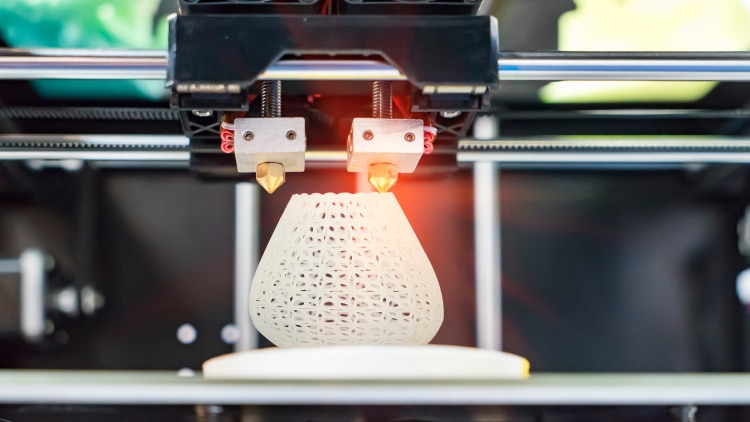![20210712_3D_printer_1240x531[1].jpg](https://api.fortress.com.hk/medias/20210712-3D-printer-1240x531-1-.jpg?context=bWFzdGVyfGltYWdlc3wzNTk3MTJ8aW1hZ2UvanBlZ3xhR1l3TDJoall5OHhNREE0TVRBM056azROVE14TUM4eU1ESXhNRGN4TWw4elJGOXdjbWx1ZEdWeVh6RXlOREI0TlRNeFd6RmRMbXB3Wnd8OGQ1MTY3ZDNlYjE3MTkzY2JhNmI0MjAxN2EyZWZlODg3NjQyYzFlNjcxYzliM2FiNmQ1ZDlmZDgxZTA4ZDIyNw)

2025 Popular 3D Printer Shopping Guide & Recommendation
The technology of 3D printers has become more sophisticated in recent years. The use of 3D printers has greatly increased convenience in areas such as biotechnology, artwork and even housing development. Many brands have launched home 3D printers to make it easy for beginners to own one to create parts, moulds and models at home. There are many models on the market. But not only do they vary widely in price, each offers different printing results. So how do you choose the right one? Check out this shopping guide and start turning your ideas into physical models!
3D Printer Shopping Tips
1. Is it suitable for home use?
Fused Deposition Modelling (FDM) is a technique that involves melting a thermoplastic material such as PLA at a high temperature and then stacking the 3D model from the bottom up according to the 3D design. This gives the finished product a similar texture to a regular plastic product. PLA materials are relatively inexpensive and easy to use, making them ideal for users who are new to 3D printing.
2. Choose a printer that does not require assembly
Some 3D printers can be shipped in a fully assembled state, while some models require the user to assemble the machine themselves. Models that require assembly can be quite a challenge for beginners, so if you are not good with manuals and don't know anything about assembling machines, it's advisable to choose a product that is sold as a finished product.
3. Print size
The size of the finished product varies from one 3D printer to another. Generally speaking, "15x15x15cm" is quite sufficient. Smaller models are more likely to fit in a home or small studio. If you want to make a large 3D model, simply divide it into several smaller components and print them in stages.
4. Choose a model with easy printhead calibration
If you want to achieve the most accurate printing results, not only do the modelling files in your computer need to be calibrated, but the level and distance of the printing platform and printhead need to be calibrated to minimise errors. These can be easily done in just one or two steps, so choose a model with simple printhead calibration.
5. Selection of printing materials
There is a wide range of 3D printing materials available with each offering different characteristics. If you want a finished product to be of a certain quality, use good quality materials when printing. Avoid purchasing poor quality materials from the web simply because they are cheap! This affects the quality of the finished product and makes the 3D printer more prone to clogging when printing.
How to Maintain 3D Printer?
1. Clean the extruder and frame
Wipe the three axes of the machine slowly with a new dust-free cloth, wipe off sludge and lubricate the three axes with lubricating oil.
2. Nozzle cleaning
Residues in the nozzle deteriorate over time and must be heated and manually pushed out.
3. Printing materials
Generally, printing materials absorb moisture and should not be exposed to the air for long periods of time. Otherwise, the quality of the finished product will be affected. Materials should be placed in a moisture-proof box and stored in a dry location.

